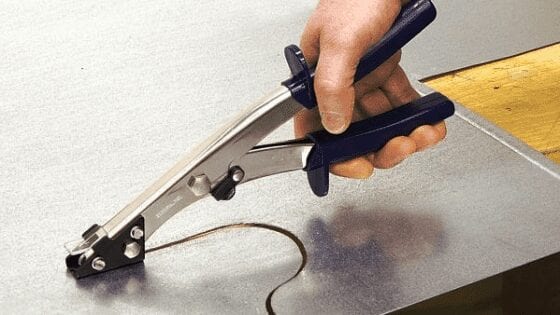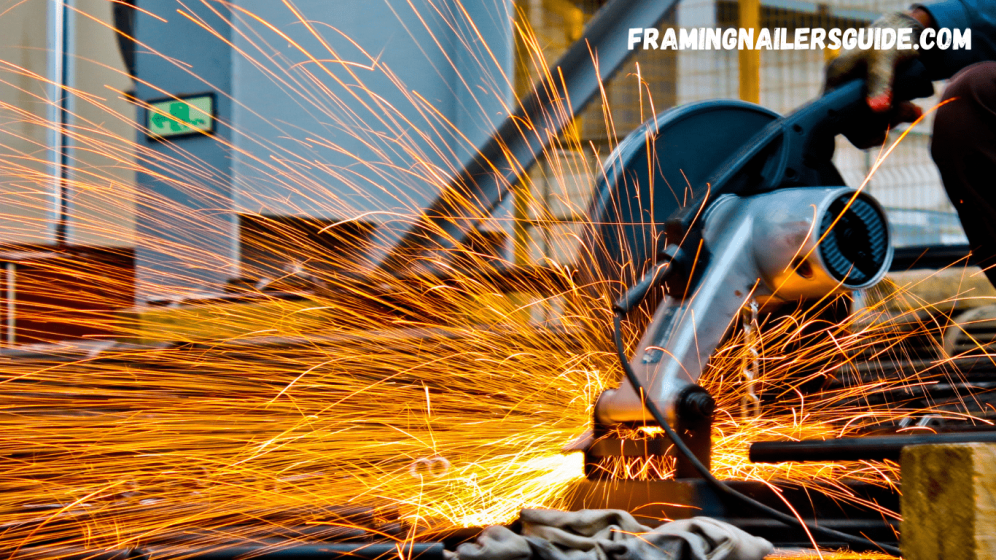
Table of Contents
- 1 Best Tools for Cutting Sheet Metal:
- 2 Sheet Metal Cutting Tools/Machines
- 3 Sheet Metal Gauge
- 4 Some Considerations While Sheet Metal Cutting
- 5 How to Cut Sheet Metal
- 5.1 #1. Tin Snips/metal snips
- 5.2 #2. Hacksaw
- 5.3 #3. Electric Sheet Metal Nibbler
- 5.4 #4. Angle Grinder
- 5.5 #5. Power Shears/sheet metal shears
- 5.6 #6. Electric jigsaw
- 5.7 #7. Sheet Metal Nibbler
- 5.8 #8. Oxygen / Acetylene Torch
- 5.9 #9. Plasma Cutting Torch
- 5.10 #10. Plasma
- 5.11 #11. Water Jet
- 5.12 #12. Punch Press
- 5.13 #13. Lasers (Sheet Metal Laser Cutting)
- 6 FAQs about how to master cutting sheet metal
- 6.1 What Does Chem Only Mean on a Metal Sheet?
- 6.2 How much is a nitinol metal sheet?
- 6.3 What size circular saw is needed for sheet metal cutting?
- 6.4 How thick is 16 Gauge Sheet Metal?
- 6.5 How thick is 26 Gauge Sheet Metal?
- 6.6 Can You Use Sheet Metal Screws in Wood?
- 6.7 How to Weld Sheet Metal?
- 6.8 Is Sheet Metal Magnetic?
- 6.9 What is Sheet Metal Made Of?
- 6.10 Can You Paint Galvanized Sheet Metal?
- 6.11 How you will be cutting sheet metal with Dremel?
- 6.12 How to cut 16 gauge sheet metal? Best way to cut 16-gauge sheets.
- 6.13 How to cut a round hole in the sheet metal?
- 7 In conclusion
Last Updated on November 19, 2024 by John Patterson
What is the easiest and best way to cut sheet metal?
As far as sheet metal cutting is concerned, the easiest method is not the simplest.
It requires the right amount of physical effort, proper expertise in tools, and a whole idea of everything regarding cutting sheet metals.
And today’s article is all about providing a one-stop guideline for all of our fellow readers.
Go through the whole piece where we’ve explained different kinds of tools, methods, and scenarios on how to cut sheet metal.
Best Tools for Cutting Sheet Metal:
- Tin Snips
- Hacksaw
- Electric Sheet Metal Nibbler
- Angle Grinders
- Power Shears/sheet metal shears
- Electric jigsaw
- Sheet Metal Nibbler
- Oxygen / Acetylene Torch
- Plasma Cutting Torch
- Plasma
- Water Jet
- Punch Press
- Lasers (Sheet Metal Laser Cutting)
Sheet Metal Cutting Tools/Machines
There are vast arrays of tools we can use for sheet metals cutter. And each of these tools has its unique propositions. From all of these options, the Framingnailersguide team chooses particular methods depending on what sort of output they want and how much they will spend on it.
However, from a broad point of view, we can divide all sorts of sheet metal cutting tools into these two kinds-
Sheet Metal Cutting Hand Tools
There are tools like shear cutters that are both versatile and easy to use when cutting sheet metals. Among other tools, there is a hacksaw for short and straight cuts. Among other hand tools, there are-
#1. Tin snips.
#2. Beverly shears.
There are a couple of right sides when working with a hand tool like this. First of all, it saves you a lot of time and money. And secondly, it’s a preferable method for beginners who’re not so used to cutting with power tools yet. The wrong side is the level of precision and accuracy you’ll get is too low to consider its professional work.
Sheet Metal Cutting Power Tools
Industrial-grade cutting jobs of sheet metals are hardly done with hand tools that consume more time and provide less output and precision. Therefore, power tools are the only option in these cases.
Among power tools, the most commonly used ones are quality handheld nibblers. It works like a tiny scissor-type snip. A couple of jaws can make a series of cuts to create a line through the metal. And that’s how the cutting job is taken care of.
Apart from handheld nibblers, there are power tools like Angle grinders, heat cutters, laser cutters, and so on.
Sheet Metal Gauge
When cutting any sheet metal, the first and foremost concern is- how thick the cut will be. And just like wires, the answer is derived in the gauge unit.
The tool that is used to measure this thickness is called a sheet metal gauge. It can cut sheet metals both in gauge and inches (fractions). It has quite some variations based on the type of job.
However, as there are two kinds of sheet metal (ferrous & non-ferrous), sheet metal gauges also are of a couple of types.
Some Considerations While Sheet Metal Cutting
Sheet metals can be cut and processed in countless ways. But as long as professional preparation is concerned, you must stick to a few convenient methods. And each of these methods comes with some precautions and considerations.
Here is a list of facts that we want you to keep in mind as considerations-
#1. The Project Specs
While choosing one cutting method from many, save the project size, the material type, and available tools nearby.
#2. The Corner
Corners of sheet metal play quite an important role when choosing the method. Almost every worker prefers the edge to be tight. Because the tighter the corner is, the more versatile it becomes.
#3. The Noise
Almost all of the hand and power tools create noise while working for cutting sheet metals. And when you are working in residential areas with this much noise, that will never be an acceptable scenario.
How to Cut Sheet Metal
#1. Tin Snips/metal snips
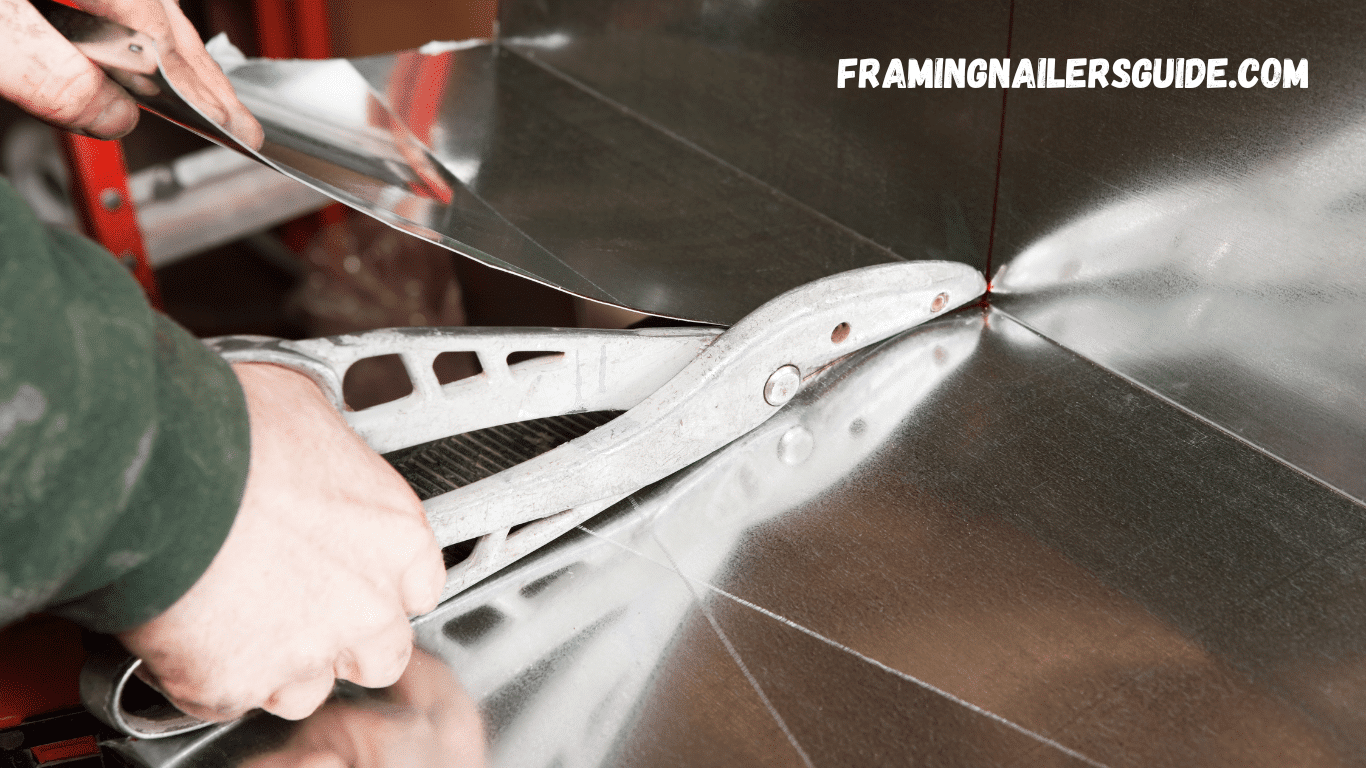
Tin snips, or aviation snips, are one of the most widely used tools to cut sheet metals. Tin snips and Aviation snips look like scissors and work fine with sheet metals like brass, aluminum, tin, steel (stainless steel), etc.
There are some cuts that you can do with decent tin snips. Such as straight cuts/snips, left cuts, the right cut, etc. From a wide variety of tin snips, you can recognize their cutting patterns by the color of the handle.
Tin Snips are almost like a beginner’s tool (right tool) to cut sheet metal. With guidance, one can master an optimal level of expertise quickly with a tin snip.
#2. Hacksaw
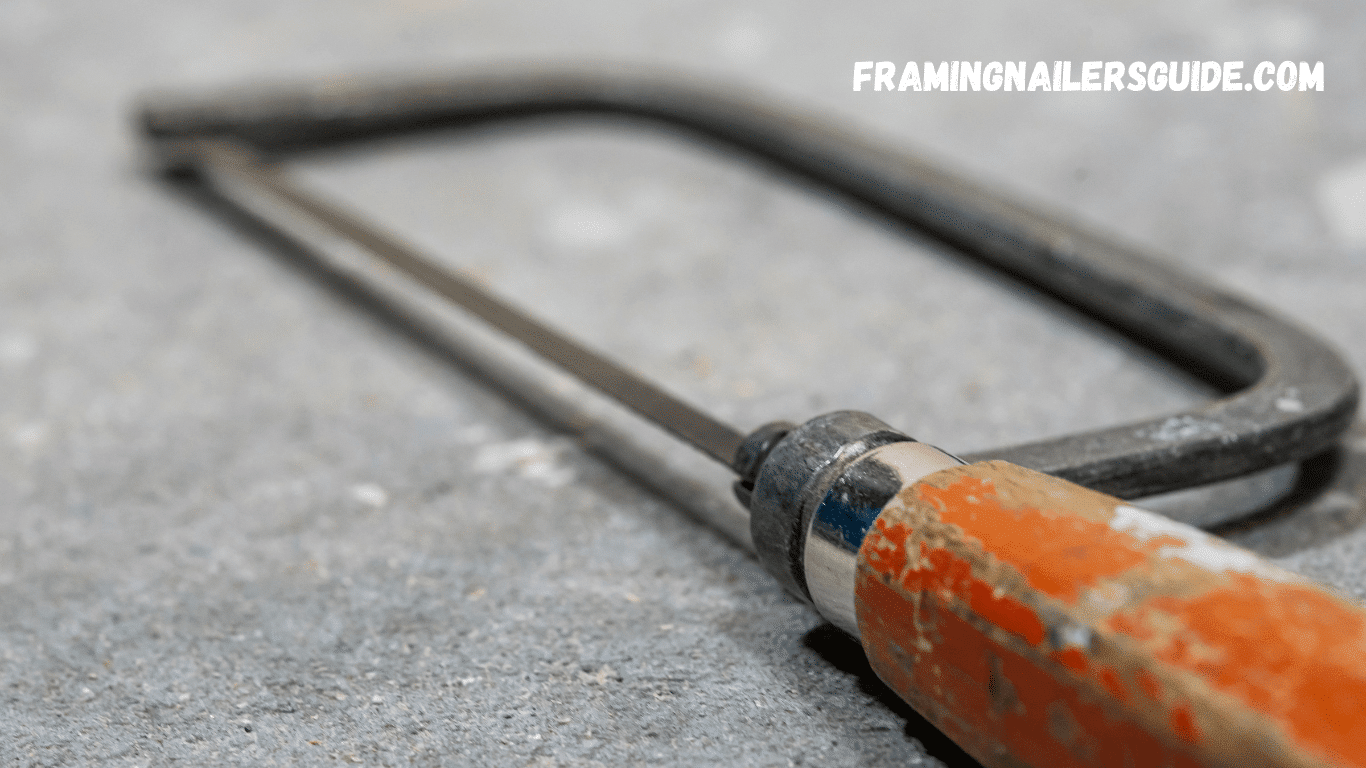
Hacksaws are another non-conventional tool to cut sheet metals, but there are some limitations it.
First of all, the shape and type of the blade in a hacksaw limit the turning radius and depth of the sheet metal. So, professionally prepared sheet metals can’t be taken through hacksaw cutting.
However, if you attempt to cut sheet metal with a top-rated hacksaw, follow these couple of tips-
Rub some wax along with the blade of the hacksaw.
Get a strip of masking tape from the top and bottom of the sheet metal. This way, it won’t create separate metal chips.
#3. Electric Sheet Metal Nibbler

Power slicing is one advanced and effective way to cut items from sheet metal. And the most frequently used tool in this regard is the best quality electric nibblers.
Electric nibblers can be used as electronic and stand-alone air tools. If you occupy a sharp blade, they work even better.
The method of working with this tool is pretty simple. There is a punch that keeps the metal under grip until it cuts a half-moon shape from the metal. And repeating the process until the end, you will get your desired metal sheet.
#4. Angle Grinder

Angle grinders are modified versions of regular electric grinding machines. The difference between them is an angle grinder can cut metal gauges at an angle, and the depth of cut is quite substantial.
When cutting sheet metals with a top-quality angle grinder, you can have more liberty regarding cutting depth. And because of being lightweight and portable, it’s also easy to operate. You have to sacrifice almost none of the cutting aspects.
#5. Power Shears/sheet metal shears

The way power shears work while cutting sheet metals is quite impressive. If you keep a sheet metal in the direction of it and operate it, it will chew away the metals and get them into perfect shape.
However, power shears are commonly used in small shops, and there are some advantages to using them over other tools. As there is no throat of this device, you can use it with more liberty of movement.
Also, it can make minor cuts on the sheet metal and create a decent amount of vibration. So, you must deal with the situation if you attempt to cut sheet metals with a suitable power shear.
#6. Electric jigsaw

Jigsaws or electric jigsaws are entirely accurate and precise regarding sheet metal cutting. To get out of this cutting tool, you must make a perfect combination of a high-quality electric jigsaw and machine.
As long as it’s the question of achieving the right consistency in cutting and turning radius, this tool hardly has any competitors. On the other hand, the result can be pretty frustrating if you fail to imply the right blade on the jaw.
Electric jigsaws are throat-less in design; therefore, you can keep some variations.
#7. Sheet Metal Nibbler
Nibbler is another tool to cut sheet metal, available as a hand and power tool. While cutting sheets with a nibbler, you may get precise control over the operation. But you have to sacrifice the cutting depth.
Cutting sheets with a nibbler is to cut punches out of a tiny metal sheet and repeat the process until you get your desired dimension.
Apart from hand nibblers, there are electric nibblers, drill-powered nibblers, pneumatic nibblers, and so on. You only need to find the best nibblers for your sheet metal cutting projects.
#8. Oxygen / Acetylene Torch

Quality Gas torches are a great tool to cut sheets if you desire superb efficiency. The immense heat produced by burning the gas melts the metal down, and it works even in areas where it’s hard to hand-reach.
The kind of torch we are talking about is portable, so you don’t have any back to deal with them. But if you consider the expense of cutting with this tool, that would be higher than almost any of the other methods.
#9. Plasma Cutting Torch

Apart from oxidizing with heat, there is another way of melting down metals into their melting point, called ionizing. The valuable tool that we were talking about was oxidizing with gas, and this time we’re talking about a tool that can ionize sheet metals. It’s called the plasma torch.
One of the most remarkable facts about a good plasma torch is that you can cut almost any sheet metal to turn them into custom metal pieces. But a couple of problems also come with the process. Firstly, it produces a tremendous amount of spark. And secondly, it leaves the cut metals with sharp edges. So it would help if you smoothened them up once done.
#10. Plasma
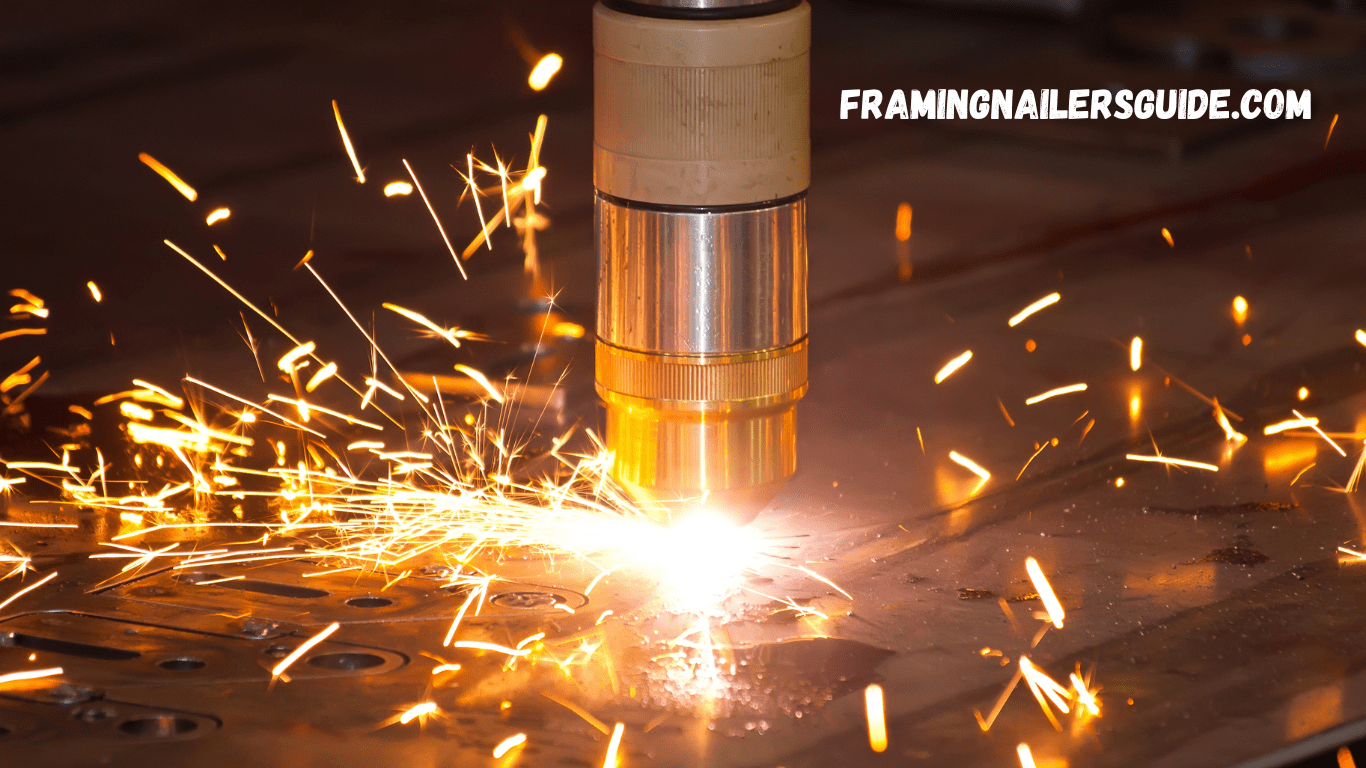
Another modern form of cutting using plasma flames is the plasma bed. This is comparatively cheaper and slower than the other industrial cutting techniques. But if you want to get away within a low budget, we guess this is an excellent fit.
The setup is a top-quality plasma torch mounted on the electronic gantry. And almost all kinds of metal sheets can be dealt with with this tool.
#11. Water Jet

The water jet is quite an exciting way to cut sheet metals. It’s formed with a tiny layer of water that contains abrasive and sharp materials. The pressure of this water flow is insane, which is why it can cut metal sheets right away.
A smooth and consistent edge seems to be a problem in most cutting methods. But with a decent water jet method, it’s no more a problem. It leaves a very high level of accuracy in the cut. Also, they are safe to handle, and the method can be applied to almost any metal.
Unlike some other methods, this process has no chemical abrasion or residue. So, you can also call it a simple process of cutting sheet metal.
#12. Punch Press
If you are likely to cut sheet metal in a particular size and shape, almost no process will work out but a few methods like the punch, press, etc.
With a suitable punch press, you can use metal sheets as per geometrical shapes and occupy numerous tools for this particular type of cutting. The process seems not to be so fast, but as extended precision and specialty in cutting are concerned, we can sacrifice the speed.
This method is used globally to create shapes and impressions like jogs, louvers, beads, and some more that are impossible to develop with laser cutting. Also, the cutting cost is cheaper than complex and complicated laser cutting.
#13. Lasers (Sheet Metal Laser Cutting)

One of the fastest, most precise sheet metal cutting methods is to cut with a high-power laser. There are modern laser machines available that can cut and format automatically once you set the track.
The speed and orientation of cutting with laser tools are limited within 2D. So, the geometric cut is quite hard to do in this case. Also, a laser cutting method doesn’t involve any physical cutting device. Achieving a precise and smooth finish is entirely possible in this case.
FAQs about how to master cutting sheet metal
What Does Chem Only Mean on a Metal Sheet?
If you are looking at a piece of metal and see chem only, that is chemical milling or chemical etching. This procedure is essential for the exact cutting of sheet metals and fine patterns. Rather than physical tools, chemical solutions eliminate unwelcome matter. It is particularly well suited for precise industries like aerospace and electronic manufacturing.
So, chemical milling presents multiple benefits. This enables complex designs which are difficult with laser cutting tools. It also protects the metal, preventing anything like stress and distortion. However, very delicate handling of chemicals is required to not screw any process up therefore it suits best experienced metalworkers or professionals with proper equipment and safety protocols.
Knowing about chemical etching is useful if you want to understand more complex metalworking projects for the DIY hobbyist. This is something you probably won’t be doing at home, but can be useful to have a grasp on when you’re choosing materials or working with pros on complicated projects.
How much is a nitinol metal sheet?
An alloy of nickel and titanium, Nitinol boasts a range of unique properties that include superelasticity and shape memory. This property makes it desirable for applications in medical, aerospace and robotics. But they also mean the metal is more expensive than others.
The quotations of nitinol metal sheets are available at different prices according to their thickness, size and supplier. Prices will typically be in the $50–$200 per sheet range. Prices can be forced upwards again with flavour grades or special treatments. For those dedicated to design and do-it-yourselfers, a purchase of nitinol may be worthwhile for some projects demanding that unique performance.
Even though nitinol can be expensive, one must consider the advantages it provides. It offers design potentials by consists of a property which return to the original or pre-defined shape after deformation. Looking for nice metalworking project ideas that are more than just a fancy reflective surface? Nitinol could be the thing that takes your work to the next level.
What size circular saw is needed for sheet metal cutting?

Selecting Circular Saw Size As We Know, This Is Super Important → Sheet Metal Cutting Generally, for cutting sheet metal with a saw, you will go with 7-1/4-inch blade diameter as saw type. It has the ability to cut through metals up to 1/8 inch thick effortlessly, allowing for precision and control at this size.
Look for a circular saw suitable for cutting metal when you choose to use one. They typically have specialized blades and slow speeds due to the hardness of metal. If you use a wood saw for metal, you’ll shake your cut, make some wobbly edges and run into trouble.
When it comes to power tools, safety should be a number one priority. To protect yourself from metal shavings and debris, make sure to use protective gear including gloves and goggles. If you use the proper circular saw and take safety precautions, those cuts should be smooth enough to machine further or assemble in place.
How thick is 16 Gauge Sheet Metal?
It is essential to understand metal gauges for cutting them correctly. The gauge system, which records the thickness of metal in sheets, uses a lower number to show that the sheet is thicker. A steel sheet of 16 gauge is about 0.0598 in, or 1.52 mm thick.
The same gauge, however, varies in thickness across different metals. Example: 16 Gauge Aluminum Sheet — is approximately 0.0508, and Stainless Steel which includes a little more than — 16 gauge stainless-steel piece is ~0.0625 Knowing these differences allows you to select what material fits your project requirements.
From automotive parts to household appliances, you can see how 16-gauge sheet metal is used widely in a variety of applications. Its suitable thickness gives it a durable feel but allows cutting and shaping easily, which is useful for professional work as well as DIY projects.
Conversion Charts for Galvanized Steel Sheet Metal Thickness#26 Gauge is approximately 0.0187 inches or just a little less than 1/64 inch thick (#11 mm).
How thick is 26 Gauge Sheet Metal?
26-gauge sheet metal is a whole lot thinner than 16-gauge metal. For example, a 26-gauge steel sheet is approximately one thousand seven hundred ninety-thousandths of an inch thick, or four hundred fifty-five thousandths of a millimeter. Its reduced weight makes it suitable for applications where flexibility and lightness take precedence.
26-gauge metal is the standard for ductwork, roofing and ornamental work because it is a thinner metal. Easily moldable, its soft nature appeals to hobbyists looking to produce complex forms and models.
However, thinner gauge metals must be handled with care. Using tools and techniques that can to not cause bending and warping during cutting and machining is more successful in; which could be a trick compared to traditional based metals.
Can You Use Sheet Metal Screws in Wood?

Sheet metal screws provide versatility in fastening to different materials – even wood. The pointed tips and sharp threads of these screws make them effective for fastening sheet metal to wood. But there are a few factors here that will get you the best results.
For wood applications, pre-drilling pilot holes is recommended when using sheet metal screws in order to avoid splitting and create a snug fit. Select a screw length that will go into the wood, but not come out of it. Using screws that are designed specifically for metal-to-wood applications will make sure that your performance is improved.
To wrap it all up, while you can use sheet metal screws in wood (as mentioned above), the best practice is to evaluate your project needs specifically and make sure that the type of screw you are using delivers the necessary strength and stability for satisfactory results.
How to Weld Sheet Metal?
Welding thin sheets is like a well-art expert. The right technique and proper methods make welded joints strong, and permanent without distorting the metal. Here are some steps you should take before starting welding sheet metal.
Pick the Right Welding Technique:
MIG (Metal Inert Gas) welding is an excellent option when it comes to working with sheet metal because it not only has a high level of accuracy but also happens to be relatively simple as well. For thinner metals, there is also TIG (Tungsten Inert Gas) welding as a possibility to have more control over the heat and added aesthetic value.
Cleaning the Metal Surface:
Clean the metal surface to remove dirt, oils and in some cases rust. A good clean surface prevents contaminants from building a barrier between the pieces of metal and making a weaker weld.
Avoid Overheating:
Sheet metal is also easily warped when exposed to excessive heat. Working with lower amperage and short lengths of welds to minimize heat input Give sufficient time for the metal to cool down in between passes.
Well, welding is an important skill for metal workers as well as DIY. With practice, that patience gets you perfect welds that really make the project.
Is Sheet Metal Magnetic?
Sheet metal has magnetic characteristics, but that is based on the composition of the strip. For instance, If sheet metals are made of ferrous materials like steel, these will be magnetic. Aluminum and copper are considered non-ferrous metals, hence they do not behave magnetically.
Important thing to know about magnetism when working with sheet metal. Magnetic metals are great for those applications where you need to attach something with a magnet or fasten it all together using magnets. Alternatively, in cases where it is necessary to avoid magnetism use of a non-ferrous metal guarantees the success of the project.
Magnetic properties have an effect on different coefficients of sheet metal work, such as fabrication and assembly. Understanding the effects of magnetism on your materials ensures that you make the right choices in your metalworking projects.
What is Sheet Metal Made Of?
Sheet metal is a multi-purpose material that can be made from steel, aluminum, copper and brass among other metals. These variations present unique characteristics and advantages that make them ideal for various applications.
There are many types of sheetmetal, but steel is one of the most popular. Because of its strength and durability, it is ideal for structural components and machinery. Aluminum is a lightweight metal with high corrosion resistance strength used in the manufacture of parts such as aircraft and automotive components.
Copper and brass sheet metals are appreciated for their beauty as well as conductivity. They are usually incorporated into architectural and decorative designs to define elegance and practicality.
Selection of just one kind of sheet metal will suffice based on the needs of a project, such as strength, looks or conductivity. Knowing the unique qualities of each metals ensure choices in material fit for your special needs.
Can You Paint Galvanized Sheet Metal?
Galvanized sheet metal requires special treatment to be painted because it is coated with a layer of zinc, which prevents rust and corrosion. I hope this article has taught you how to properly paint galvanized metal so that it looks good and lasts for years.
Preparation: Use soap and water or a degreaser to remove dirt, grease and any existing coating. A clean surface promotes better adhesion of the paint.
Prepare the Metal: Apply a galvanized-friendly primer. It acts as a bonding agent between the paint and the metal to prevent peeling and chipping over time.
Select the appropriate type of paint : You need to choose a right kind of paint for metal surfaces like acrylic or latex paint. Do this in multiple thin coats, allowing the previous coat to dry before applying the next.
It finishes off the fabrication well, looks good, and best of all still does its job as a coating over galvanized sheet metal. By taking these few steps, you will get results that last and look great.
How you will be cutting sheet metal with Dremel?

Answer: Dremel multi-tool is also known as MultiPro, and you need these few tools to cut sheet metals with it-
#1. Dremel MultiPro rotary tool kit.
#2. Dremel cutting wheel attachment.
#3. Low adhesive tape.
#4. Pencil.
Once you get the tools in hand, follow these steps-
Step 1: Loosen up the drill head with the provided wrench. Install one of the cutoff ⅛” cutters.
Step 2: Mark the cut line with adhesive tape and draw your cut lines.
Step 3: Place the Dremel cutter on the cutting line perpendicularly to the sheet metal. Hold the tool tight.
Step 4: Set the rotation speed to 2000 RPM and start the machine. Take the cutter across the cut line, and don’t force it through.
Step 5: Repeat the process horizontally if you have to.
How to cut 16 gauge sheet metal? Best way to cut 16-gauge sheets.
Answer: Cutting 16 gauge sheet metals comes with different aspects than cutting regular sheet metals. Because tin snips get failed after ¼ inches of an attempt to cut, if you try with a jigsaw, it drags the metal sheet up and down. Also, if you use a Dremel tool, it will take hours to do that.
However, there is some special kind of hacksaws that are appropriate for this job. They used to contain a wire-like blade. That might be a perfect tool to cut 16-gauge sheet metals.
We will go for a handheld grinding wheel if you ask for the nearest option right in your garage without any fancy tools. While cutting a 16 gauge metal sheet with that, use the coarse cut method. And finally, use a Dremel tool to clean it up.
How to cut a round hole in the sheet metal?
Answer: Holes have great significance as long as various uses of sheet metals are concerned. For example, they help with mounting parts, routing wires, etc. And if you’ve to learn how to create holes in sheet metal, here is a brief guide-
Step 1: Locate the centers where you will be building the holes and mark the holes with a compass or pencil: Punch-Strike, the center of each circle.
Step 2: Use a clamp to hold the sheet metal workpiece and start drilling. Also, make sure to mask the sheet with tape. It will help to prevent a tear-out and put more control over it.
Step 3: While drilling holes, twist drills are the best options for straightforward operation. Drill a small diameter pilot first and gradually move towards more massive holes.
In conclusion
Finally, we are at the rock bottom of the long guide on cutting sheet metal.
I hope that all of the methods and broken-down processes helped you to pick up the correct cutting technique and the right tool for the proper purpose.

